Tourism


Giraffe
The Giraffe is a long-necked, hoofed mammal that is natively found grazing in the open woodlands of sub-Saharan Africa. The Giraffe is the tallest living animal on land and despite its height is mostly closely related to the much smaller and solitary Okapi, that is found elusively dwelling in the dense tropical forests. There are nine recognised sub-species of Giraffe that are found in differing geographic locations and vary somewhat in the colour and pattern of their spot-like markings. Although the Giraffe would have once been found across sub-Saharan Africa and even in parts of North Africa, today they are extinct from much of their historically vast natural range with only small, isolated populations remaining in a handful of regions in central Africa. Further south however, Giraffe populations are considered to be stable and are even growing in some areas due to an increase in demand for them on private ranches.

Deer
The deer has proliferated across the globe and evolved many adaptations to help it cope with the rigors of a hostile world. Its regal antlers are some of the most notable characteristics in the animal kingdom, used for defense and sexual signaling. When it is disturbed, it can spring into action with its remarkable speed, agility, and finesse. And it has evolved a unique ability to digest all kinds of vegetation. The deer is a kind of evolutionary success story.
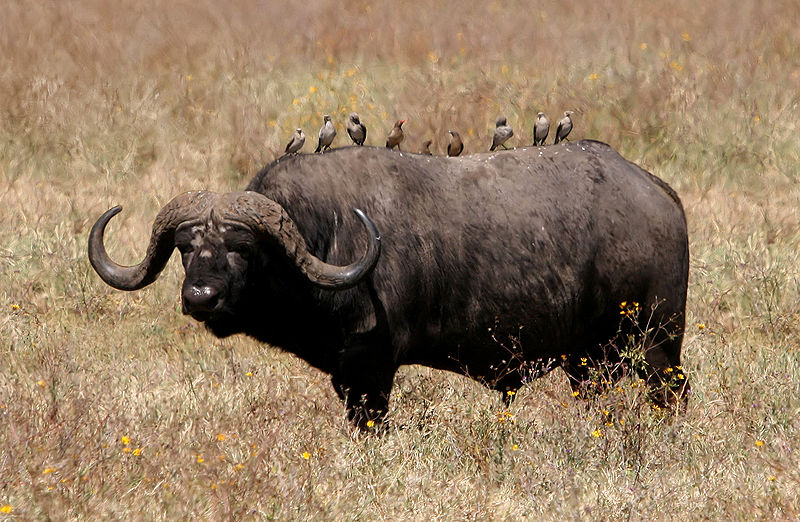
Buffalo
What this lumbering African bovine lacks in style, it makes up for in substance. Not to be confused with American bison, the African Buffalo can adapt to a wide variety of habitats, runs up to 37 miles per hour and literally cannot be tamed. Over their roughly two-decade lifespan, they hang around in herds that “vote,” while grazing on lands that are increasingly threatened by human development. The buffalo’s ornery nature and roughly 35 mile-per-hour top speed leads to numerous injuries and deaths every year, earning it the nickname “black death.”

Antelope
“The antelope is one of the fastest land animals in the world” With its elegant, bounding leap, the antelope roams the forests and plains of Africa and Asia, relying on its incredible speed and agility to elude the most fearsome predators. Although very common and widespread, it still faces enormous dangers from excessive hunting and poaching.
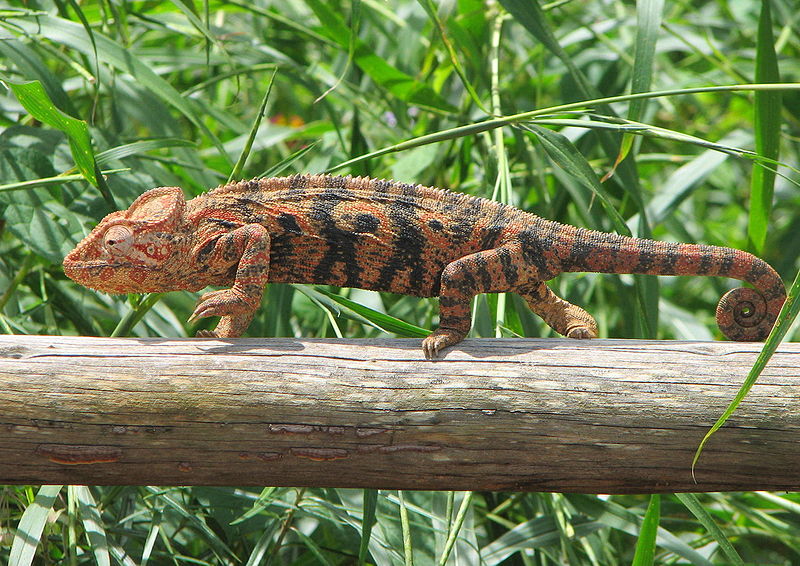
Chameleon
The chameleon, scientific name Chamaeleonidae, is a species of lizard. There are over 160 species of these lizards spread across Madagascar, Spain, Africa, Asia, and Portugal. They have large eyes, a curled tail, and some species can change the color of their skin to blend in with their surroundings as a defense mechanism from predators. These lizards can change their skin to be pink, blue, red, orange, green, black, brown, light blue, yellow, and turquoise.

Flamingo
The flamingo is a large colourful bird found both in South America and Africa. The flamingo is also found in the warmer areas of southern Europe and western Asia. The flamingo stays in flocks of up to around 200 birds and feeds on fish in stiller rivers and lakes. The flamingo usually gets to about 30 years old although it is not uncommon for some flamingos to get to 50 years old. Most species of flamingo are a pinky/orange colour, some however can be white, black or even blue. The colour of the flamingo comes from the flamingo eating a type of algae that then turns the flamingo into the bright pink bird that we are so familiar with. The flamingo is often seen on the banks of the lake standing on one leg. The flamingo is actually sleeping when it is on one leg but the strange thing is, that only half of the flamingo is actually asleep – the half that contains the leg still standing remains active. The flamingo then swaps over so that the remaining side can get some rest and the side that was sleeping becomes active again.
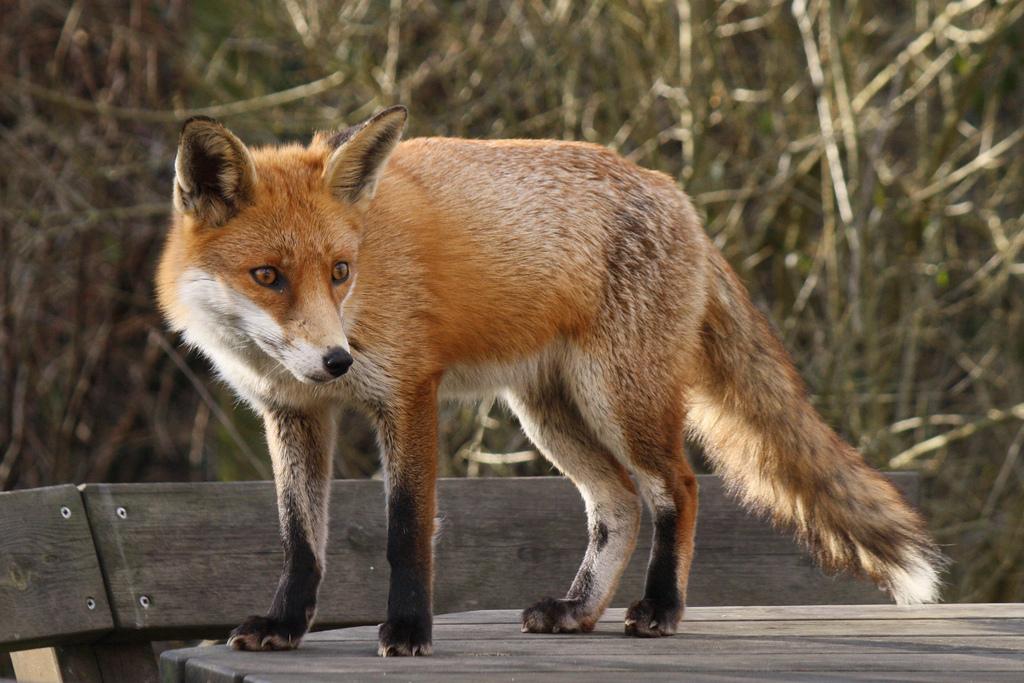
Fox
The fox is a scavenger carnivores dog, generally found in urban city areas in the northern Hemisphere. The fox is a nocturnal mammal, meaning that the fox only goes out a night to hunt for prey. Wild foxes tend live for around 6-7 years, but some foxes have been known to be older than 13 in captivity. The wild fox hunts for the mouse and other small mammals and birds, but foxes appear to enjoy all species of insect. A fox is generally smaller than other members of the dog family like wolves, jackals and domestic dogs. Foxes can be a pest in the cities as foxes are often seen tearing into rubbish. There are around 12 different species of fox found around the world, which include the urban fox or red fox, the beautifully white Arctic fox, the sand fox which is a light-coloured fox found in desert regions and the tiny yet big eared fennec fox.
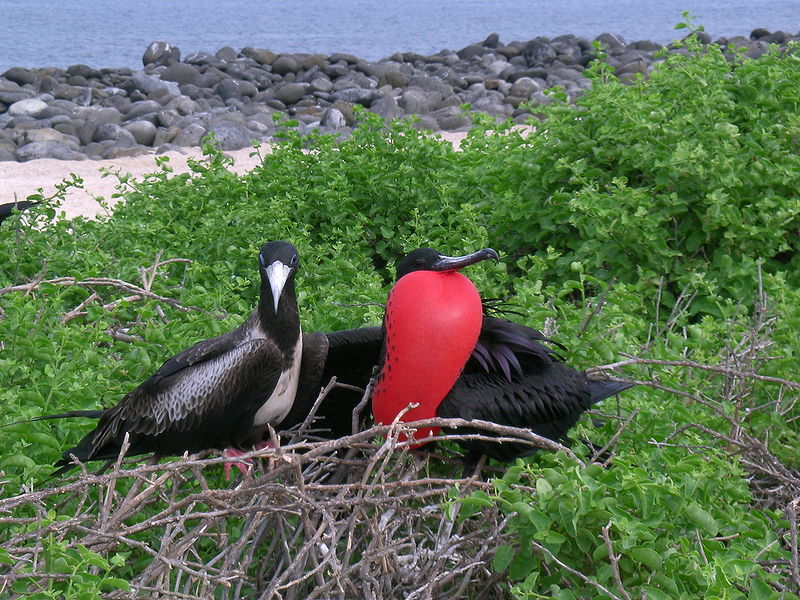
Frigate Bird
There are five different species of frigatebirds that can be found near tropical and subtropical coasts around the world. These birds can fly for hours, days, or even weeks at time due to their large wingspan. They have a slender black body and wings. and the males have a very unique red pouch that inflates when they are trying to attract a mate. • Frigatebirds are also known as man-o’-war birds. • Compared to their body size, this bird’s wingspan is larger than that of any other bird. • Females can spend up to one-and-a-half years rearing their chick before it will be ready to go out on its own. • These birds often steal fish and other food from other seabirds using their hooked beak. • On land, frigatebirds live in a large colony with up to 5,000 other birds.
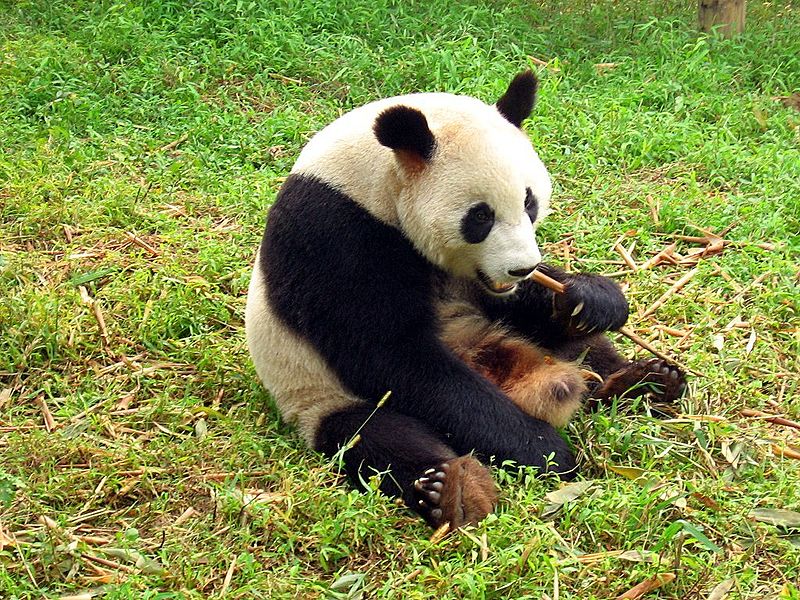
Panda
The Giant Panda is a species of bear that is found in the mountains of central and western China. One of the most famous and easily identifiable animals in the world, the Giant Panda is also one of the rarest and is under immense threat in its natural environment, primarily from habitat loss. The Giant Panda is unique among bears as they do not hibernate, have very small babies at birth and survive on a diet that is almost entirely vegetarian. Since the Giant Panda was first discovered by a French naturalist in 1869, it has become a global symbol for conservation with the World Wildlife Fund using it as their logo. The Chinese people also see the Giant Panda as a symbol of peace and numerous efforts have been made to try and protect the remaining populations in their native habitats.

Cheetah
The Cheetah is a large and powerful feline that was once found throughout Africa and Asia and even in parts of Europe. Today however, it is found in only a few remote regions of its once vast natural range, primarily due to growing Human settlements and the hunting of them for their fur. There are widely considered to be five different subspecies of Cheetah that vary only very slightly in colouration and are most easily distinguished by their geographic location. Although they are not considered to be part of the ‘big cat’ family as they cannot roar, Cheetahs are one of Africa’s most powerful predators and are most renowned for their immense speed when in a chase. Capable of reaching speeds of more than 60mph for short periods of time, the Cheetah is the fastest land mammal in the world.

Kangaroo
The kangaroo is a marsupial that is indigenous to Australia and the Indonesian island of New Guinea. Although kangaroos are often seen congregating in groups, kangaroos are generally fairly solitary mammals but kangaroos are also known for being sociable animals when with other kangaroos. Kangaroos have a deep pouch on their front in which to carry their young. A baby kangaroo is called a joey. Kangaroos eat plants, nuts, berries and insects that the kangaroos rummage for in the arid wilderness. Kangaroos are most well known for their ability to jump a phenomenal distance. The kangaroo is the largest of the marsupials, a group of animals that includes koalas and the common brushtail possum. Marsupials are distinguished by the pouch that these animals have on their bellies, in which they carry their young. There are three main species of kangaroo in existence today and these are the red kangaroo, which is the largest and most well-known of all the kangaroo species. The Eastern grey kangaroo is known to be the heaviest species of kangaroo despite the fact that the red kangaroo is taller. The western grey kangaroo can be found in large numbers and can be anywhere in colour from grey to brown. The kangaroo is the national animal and emblem of Australia.
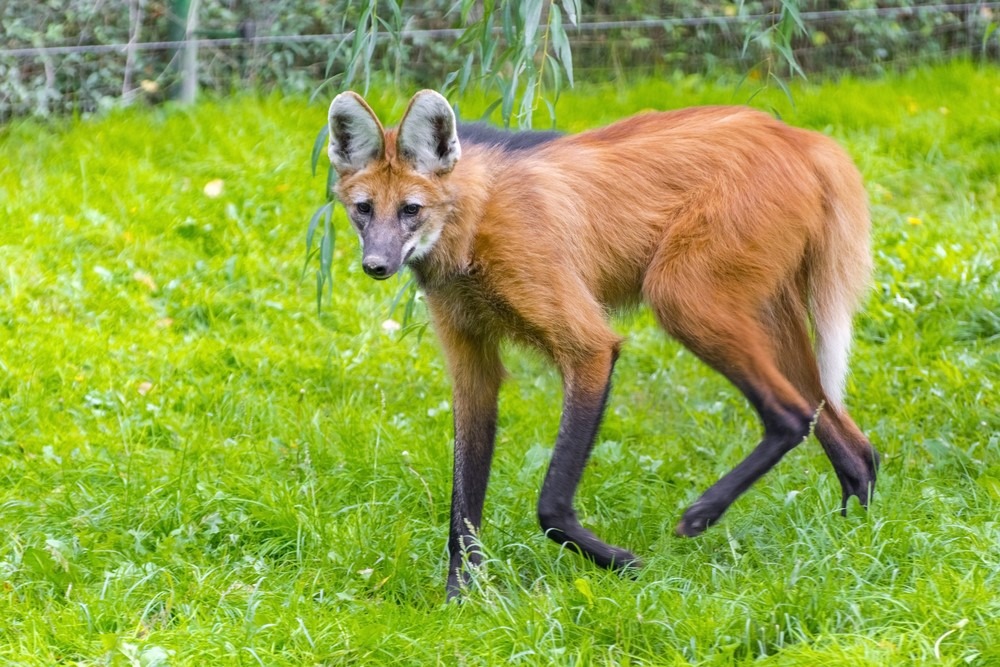
Manned Wolve
The Maned Wolf is found in Argentina, Brazil, Paraguay, and other countries in eastern and central South America. They have very long and skinny legs, making them the largest canine in South America. Their long legs almost make them look like a fox on stilts. In addition to these distinct legs, Maned Wolves also have a very easily recognizable black mane. Their fur is reddish-brown or golden orange in color. These canids are solitary animals. They do not hunt in packs, unlike many other canines. They can be found in grasslands, savannas, wetlands, forests, and marshes.
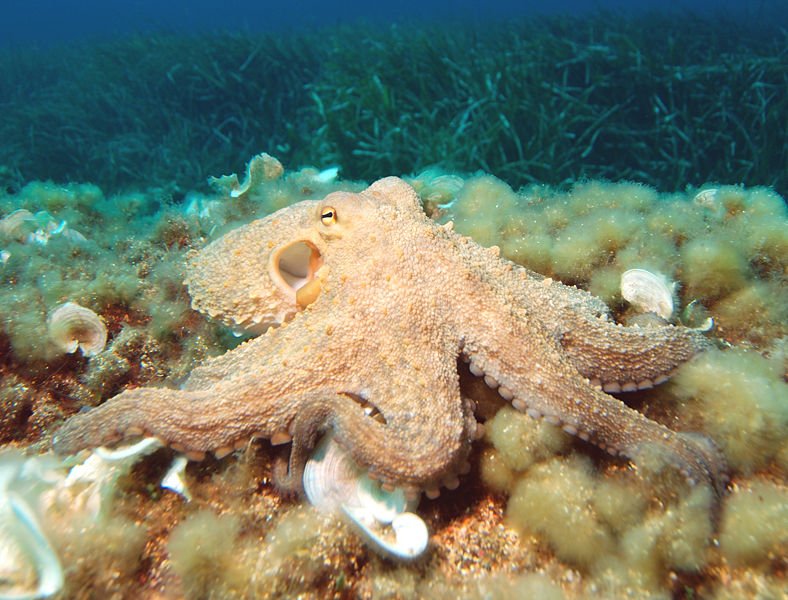
Octopus
With the highest brain-to-body-mass ratios of all invertebrates – higher even than those of some vertebrates – the octopus is regarded as the smartest of all invertebrate animals. These cephalopods are intelligent enough to engage in deceitful activities, including pretending to be “moving rocks” to outwit predators. More than 300 species of octopus exist, and they are mostly found in tropical and temperate seas around the world. These creatures have existed for many millennia; the first known octopus fossil, Pohlsepia, is believed to have lived more than 296 million years ago.

King Cobra
Most king cobras measure from 12 to 18 feet long. They live in southern China, India, and southeastern Asia. Their habitat includes streams, forests, bamboo thickets and swamps. This snake is a carnivore eating other snakes, birds, and lizards. King cobras live about 20 years in the wild. Incredible King Cobra Facts • It’s the only snake that builds a nest for its eggs • They have enough venom in their bite to kill an elephant • This reptile raises the top half of its body and expands its hood when it feels endangered • Humans are its only predators • A group of king cobras is called a quiver
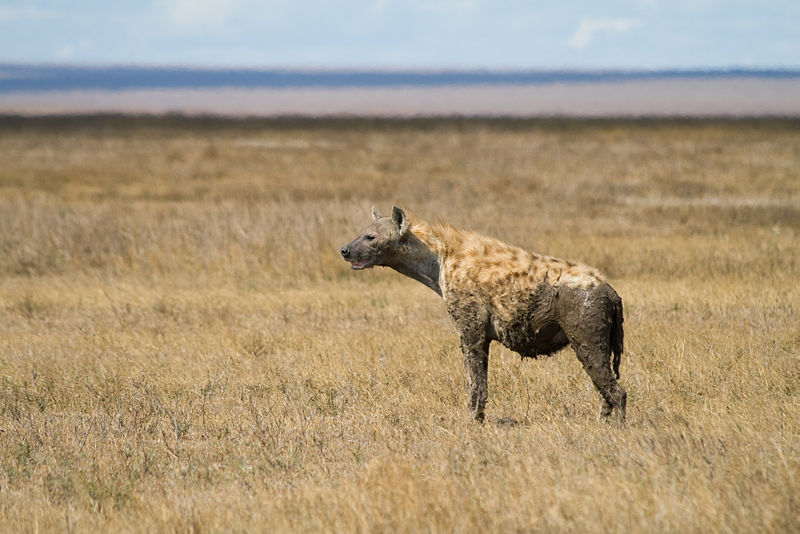
Hyena
Humans tend to make snap judgments about these animals. We think of them as savage gluttons with demonic laughs. But it’s an unfair characterization. In reality, they are sociable and smart. Plus, they play a vital role in the African, Middle Eastern, and Asian ecosystems. Hyenas rival lions in terms of predatory prowess and the spotted hyena’s community structure will make you shout, “no way!” So, let’s abandon our assumptions and dive into the wild and wondrous world of these animals. 8 Fascinating Hyena Facts Talking hyenas are a staple in Disney animated features, including Dumbo, Lady and the Tramp, Noah’s Ark, Bedknobs and Broomsticks, and, of course, The Lion King. In 1999, the lions and hyenas of Ethiopia’s Gobele wilderness went to war. The situation grew so deadly that the military intervened. In the end, the lions killed 35 hyenas, and the hyenas managed to kill six lions. In some parts of Somalia, these animals are a delicacy. Some species have bright white feces due to the large amount of calcified bones they eat. Females dominate in spotted hyena clans. Contrary to popular belief, hyenas have more in common with cats than dogs. The 26th president of the United States, Teddy Roosevelt, maintained an animal menagerie that included a hyena. Ancient Greeks and Romans believed hyena parts were effective shields against evil and ensured fertility.

Hippopotamus
The Hippopotamus is a large semi-aquatic mammal that is found wallowing in the rivers and lakes across sub-Saharan Africa. Despite its appearance, the Hippopotamus is actually thought to be most closely related to Whales as the two are thought to have had a common ancestor that existed roughly 54 million years ago. Also known as the Common Hippopotamus, it is one of two Hippo species that are found on the African continent with the other being the solitary and forest-dwelling Pygmy Hippopotamus which is only found in western Africa and is now Critically Endangered. Although the Common Hippopotamus remains abundant and widespread throughout its current range, numbers are reportedly declining due to both hunting and habitat loss.
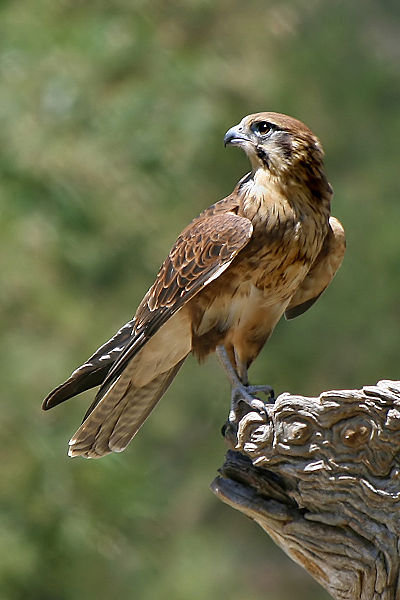
Falcon
Falcons are medium sized birds of prey found all across the world although falcons tend to prefer the more temperate regions of the Northern Hemisphere. Falcons are best known for their ruthlessness and their incredible flying abilities. Falcons have tapered wings that allow the falcon to change direction extremely quickly especially when compared to other birds. Falcons have been recorded diving at speeds of up to 200mph, meaning they are the fastest creatures on the planet! There are more than 40 different species of falcon that can be found all around the world such as the peregrine falcon and the black falcon. Falcons vary in size from 25cm tall to more than 60cm tall, but the height of the falcon depends on the species. The peregrine falcon is the most common bird of prey in the world and is found on every continent besides Antarctica. Falcons are birds of prey and are therefore known for their incredible hunting skills and being a ruthless, dominant predator within their environment. Falcons hunt their prey from the skies above and swoop down through the air to catch it once they have spotted a meal with their incredible eyesight. Falcons hunt all kinds of small animals like mice, frogs, fish and falcons will even catch small birds in the air.

Hummingbird
There are nearly 350 known species of hummingbird, found throughout the Southern Hemisphere. Although some species of hummingbird are occasionally found further north, these small birds tend to prefer the more tropical climates. Hummingbirds beat their wings 15-80 times every second (depending on the species) meaning that the hummingbird has the incredible ability to hover in the air. The hummingbird is also the only species of bird that is able to fly backwards. The bee hummingbird is native to Cuba and is the smallest bird in the world, measuring around less than 5cm tall and the bee hummingbird is around the same weight as a penny. The giant hummingbird found in the Andes is the world’s largest hummingbird measuring more than 20cm in height.

kingfisher
The kingfisher is a small to medium sized colourful bird generally found close to water.There are nearly 100 different species of the kingfisher bird found around the world. Kingfishers live both in wetlands and woodlands worldwide, feeding mainly on fish but also insects, frogs and crayfish with those kingfisher species that live in the woodlands occasionally eating reptiles, birds and even small mammals. There are three main types of kingfisher around the globe which are the river kingfishers, the tree kingfishers and the water kingfishers all of which have large heads, long sharp pointed bills, short legs, and stubby tails. The smallest species of kingfisher is the African Dwarf Kingfisher, which gets to an average of 10.4 g in weight and just 10 cm (4 inches) in length. The largest kingfisher species is the Giant Kingfisher, which gets to an average of 355 g (13.5 oz) and grows to 45 cm (18 inches).

Lion
The lion is one of the largest, strongest and powerful felines in the world, second only in size to the Siberian Tiger. They are the largest cats on the African continent. While most big cats are solitary hunters, lions are incredibly sociable animals that live together in family groups called prides. Incredible Lion Facts! Between 1993-2014, the IUCN estimated the population of lions decreased by 42%. Due to poaching and habitat loss, its estimated there may be fewer than 20,000 lions left today. While lions are generally social creatures, prides generally consist of 80% females. For this reason, only about one in eight male lions survive to adulthood. Groups of male lions sometimes band together, controlling vast swaths of territory. One famous band of male lions in South Africa’s Kruger National Park controlled over 170,000 acres and was estimated to kill more than 100 rival lions and cubs. Lions have long been kept in zoos and in captivity. In 18th century England, the price of admission to the Tower Menagerie (the pre-cursor to the London Zoo) was three pence, or a cat or dog to be fed to the lions!.

Komodo Dragon
The Komodo Dragon is a large species of lizard that is only found on a handful of islands in the Indonesian archipelago. Not known to the world until the First World War, the Komodo Dragon is actually a species of Monitor Lizard that has been evolving in island isolation for millions years, which has led to it becoming very large indeed. The Komodo Dragon is not only the largest lizard in the world, but it also one of the most aggressive and is so powerful that it is able to take prey many times its own size. However, Komodo Dragons are also in severe danger in their natural environments as hunting and habitat loss, along with a shortage of prey, has led to population declines on the few islands where they are found in the Komodo National Park, meaning that they are now listed on the IUCN’s Red List and therefore have some legal protection.
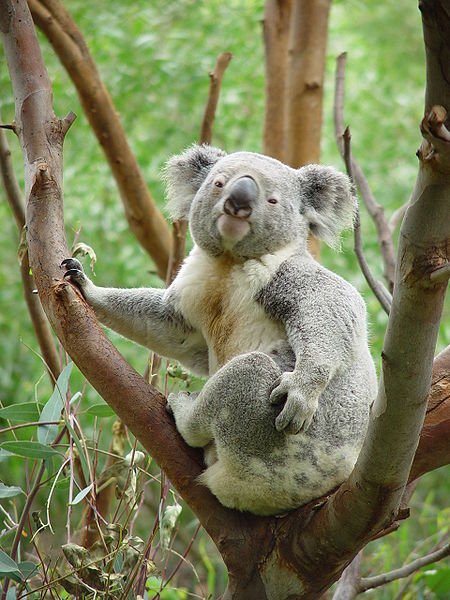
Koala
The Koala is a small to medium sized mammal that is found inhabiting a variety of different types of forest in south-eastern Australia. Despite its appearance and the fact that it is also known as the Koala Bear, Koalas are in fact marsupials but are so distinctive amongst this specially adapted family of mammals that they are classified in a scientific group of their own. However, although they are now considered to be one of Australia’s most iconic mammal species when European settlers first arrived things were very different, with millions of Koalas known to have been killed every year for their pelts (fur). The Koala is a unique animal that famously feeds only the leaves of the eucalyptus trees which they inhabit but this diet is very hard to digest and lacks many of the vital nutrients that are key to the survival of a number of animal species. Today, although populations are stable and widespread the Koala is affected by habitat loss as vast areas of land are cleared every year to support growing development.

Golden-Masked-Owl
The golden masked owl is known for its whitish/yellow heart-shaped face and large dark eyes. This owl is a carnivore eating small rodents, birds, insects, rabbits, and sometimes other owls. The feathers on its wings are designed for moving silently through the air. These birds live in the tropical climate of the island New Britain, Papua New Guinea. 5 Incredible Golden Masked Owl Facts! • This owl lives an average of 4 years in the wild • It has 2 to 3 eggs per clutch • This owl doesn’t hoot, it screeches • It is a solitary bird • It starts hunting for prey at dusk

ladybird
The ladybird (also known as the ladybug) is a small colourful beetle found all around the world. There are thought to be more than 5,000 different species of ladybird in the world, with more than 450 species found in North America alone. The ladybird is best known for it’s spotted body (normally red and black, but often orange and yellow are found), and their ability to rid gardens of their aphid pests effectively. It is thought to be good luck to find that a ladybird has landed on you, and most definitely bad luck if you then squash it! Ladybirds are small sized insects rarely growing to more than a centimetre in length. Ladybirds have size legs that are black in colour and their brightly coloured shell, protects the wings of the ladybird which are concealed beneath the spots. Ladybirds are known to hibernate once the warm summer weather begins to cool. Ladybirds will hibernate in large groups in sites which are used year after year, and ladybirds are thought to hibernate in this communal fashion in order to increase their chances of surviving the cold winter. It is thought that pheromones are released by hibernating ladybirds which attract other ladybirds to hibernate in the same place.
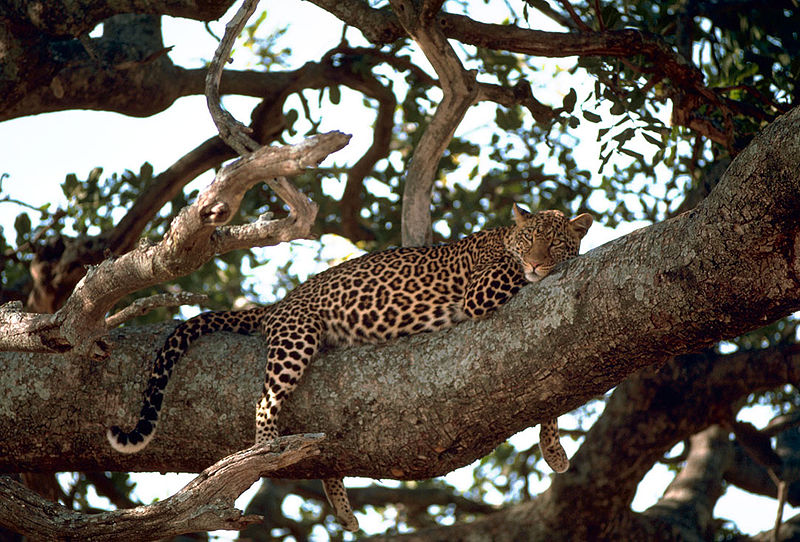
Leopard
The Leopard is a medium-sized wildcat that is natively found in a variety of different habitats across sub-Saharan Africa and southern Asia. A member of the “Big Cat” family, the Leopard is an agile and opportunistic hunter that has been able to exploit habitats unused by other large felines as it spends a great deal of its time high in the tree branches. There are seven different sub-species of Leopard which differ in their appearance and geographic location, with the African Leopard being the most common and widespread and the others being the rare Amur Leopard, the Anatolian Leopard, the Barbary Leopard, the Sinai Leopard, the South Arabian Leopard and the Zanzibar Leopard. Although the African Leopard populations are stable throughout much of their natural range, the story is different for the remaining sub-species that are often isolated and critically at risk (the Zanzibar Leopard is actually now thought to be extinct). .

Ostrich
The ostrich is the biggest bird in the world with a male ostrich often growing more than 2 meters tall. The ostrich is also the world’s fastest bird on the ground being able to run at speeds of up to 50 mph for short periods of time. Despite the fact that the ostrich is a bird, the ostrich cannot fly and instead will run away when threatened. The ostrich weighs more than 100kg which is the main reason as to why the ostrich is unable to fly. The ostrich will also lay flat on the ground to hide from predators. The ostrich mainly eats grubs and insects, often found in the ground. The ostrich is well known for putting its head into the ground to get the bugs in the soil. The ostrich also has a kick so powerful that it can be fatal to most mammals. The ostrich is found natively in Africa (and also used to be found in the Middle East) but the ostrich is farmed for its meat, skin and feathers all around the world. The ostrich lays the biggest eggs of any bird species with an ostrich egg generally being more than 10 times bigger than the average chicken egg. Due to its sheer size, the egg of the ostrich is considered a culinary delicacy in many human cultures.

Pangolin
The pangolin isn’t an ordinary mammal by any means. They have interesting scales and a characteristic reaction of rolling over when threatened leave a distinct impression on those who encounter them. Their unique coat has also made them a prime target for poaching and trafficking, which has significantly diminished native populations around the world. Despite similarities to anteaters in diet and appearance, these small mammals are actually quite distinct and are classified into their own taxonomic order. Incredible Pangolin Facts! Pangolin scales are actually clumps of hair made from keratin. They look and act like anteaters, but aren’t closely related to them at all. Their scent glands can spray odors as a secondary defensive mechanism. They are one of the most trafficked animals in the entire world.

Zebra_Shark
Zebra sharks are gentle fish that hang around coral reefs in tropical oceans. They spend their days sleeping and their evenings leisurely hunting around the sea floor and eating. Because of climate change and human activity, zebra shark numbers are in free fall. A worldwide effort is underway to save them, and there are small things we can all do to support their survival. Five Fascinating Zebra Shark Facts For years, a population of zebra sharks has been gathering at an annual summer summit that continues to mystify scientists to this day. Female zebra sharks don’t need men to reproduce. They can do it on their own! People often confuse leopard sharks and zebra sharks. The longest zebra shark ever recorded was 11 feet long. Zebra sharks are incredibly flexible and slim and can forage in narrow crevices.

Wolverine
The wolverine is a medium sized mammal that despite its bear-like appearance (and its name) is most closely related to the weasel. The wolverine is known to be strong and vicious and is said to have immense strength in comparison to its size. The wolverine is found throughout Canada, Europe, parts of North America and the Arctic Circle where the wolverines inhabit mountainous regions and dense forests. Wolverines are also known to venture into more open areas such as plains and farmland when they are in search of food. The wolverine generally eats mice, rats and other small mammals, birds and eggs during the summer months when these small animals are in abundance. During the bitter winter however, when snow covers the ground, the wolverine tends to hunt larger animals such as reindeer (caribou), sheep and moose. Despite the fact that the wolverine is known to be capable of hunting down and killing animals that are so much bigger than itself, the wolverine tends to prefer to scavenge the kills of other animals such as wolves and bears. The wolverine will let the larger predators hunt the prey down and the wolverine then chases the hunter away by showing its teeth and growling fiercely. Then the wolverine is left to eat the kill.

Wild_boar
Wild Boar Classification and Evolution The Wild Boar is a species of Wild Pig, native to the forests of Europe, north-west Africa and it is also found throughout Asia. The Wild Boar has an extremely wide distribution with the number of estimated Wild Boar subspecies ranging from 4 to 25. Naturally, it is hard to classify them all as they can easily interbreed, so it is widely agreed that there are four main subspecies which are determined by their location. They are all very similar in size and appearance, but tend to vary somewhat in colour, depending on their geographic location. The Wild Boar is an extremely adaptable animal as it is found in a variety of different habitats, eats almost anything that will fit in its mouth and not only runs fast, but also swims well too. They are also commonly known as European Wild Pigs, Hogs or simply Boars.

River_Dolphin
The Amazon river dolphin (also known as the pink dolphin and botos) is a freshwater animal. It lives in the Amazon and the Orinoco rivers as well as in waterways located in Bolivia, Columbia and Peru. The river dolphin is smaller than other types of saltwater dolphins, and the species has excellent hearing. These dolphins must live in warm, shallow water areas because they have very little blubber. River dolphins suffer in captivity with few aquariums able to keep them alive. Amazon river dolphins also generally become more pink as they age, which has led to the species becoming known as the ‘pink dolphin.’

Rhinoceros
The rhinoceros one was found from Southeast Asia across Africa. Today, three rhino species are listed as “Critically Endangered” and clinging to small pockets of habitat. With its distinctive horn and massive size, the rhino is one of the most unique mammals on Earth. However, heavy poaching for its horn threatens several rhino species today.

Raccoon
The raccoon is a medium sized bear-like mammal that was originally only found in North America. Due to the deliberate introduction of the raccoon into other countries, the common raccoon can also be found now in Europe and Japan. The average raccoon is around 70 cm from the raccoons nose to the tip of the raccoons tail. A fully grown raccoon can weigh up to 10kg and can live for up to 20 years in captivity. Raccoons in the wild however, tend to have a much lower life expectancy. The raccoon originally inhabited densely wooded areas and large forests but today the raccoon has adapted to living in mountainous and wetter habitats. The raccoon has also moved closer to human communities as the raccoons are able to find food very easily but many homeowners consider them to be pests. Raccoons are grey, omnivorous animals surviving on a diet consisting of insects, plants and small animals such as fish and the occasional bird. Raccoons tend to be nocturnal but it is not uncommon to spot a raccoon during the day.

Puma
The Puma is a large, secretive Cat predominantly found in the mountains from southern Canada to the tip of South America. Also commonly known as the Cougar and the Mountain Lion, Pumas are able to reach larger sizes than some ‘big’ cat individuals but despite their large size they are believed to be more closely related to smaller feline species. Due to their extensive distribution, there are 7 subspecies of Puma all of which share similar characteristics but tend to vary slightly in colour and occasionally size. The Puma is thought to be one of the most adaptable felines on the American continents as they are found in a variety of different habitats and unlike numerous Cat species, the Puma has no markings on its fur leading to its scientific name Felis concolor which means ‘cat of one colour’.

Polar_Bear
The Polar Bear is a large species of bear that is found inhabiting the ice fields in the Arctic Ocean. It is the biggest species of bear in the world (with the exception of the Kodiak Brown Bears found in Alaska which can reach similar sizes) with males often weighing-in at around 600kg. Thought to be closely related to the Brown Bear, the Polar Bears’ name actually means “Sea Bear” as they are known to not just spend a great deal of time close to the coast, but are also strong and capable swimmers that have been spotted up to 100 miles from the closest ice or land. They are however being devastatingly affected by global warming as the ice that they rely so heavily on is disappearing fast and has led to the Polar Bear becoming a strong symbol of the effects of climate change. Polar Bear populations have also fallen across the Arctic Ocean due to hunting, pollution and drilling for oil and gas leading to them being as listed as a threatened species.

Pelican
The pelican is a large bird that is most well known for the pouch that the pelican has in its beak which the pelican uses to scoop fish out if the water. The pelican is found in the countryside worldwide, dwelling near water and densely populated fishing areas. The brown sea pelican is one of the largest species of pelican with male pelicans often leaving the flock to hunt alone at sea. The brown pelican is particularly remarkable for its ability to swoop down to the ocean surface from enormous heights to catch fish. The pelican is generally an enormous bird with some species gaining a wingspan of well over 3meters. Other species of pelican are much smaller but these smaller species of pelican tend to live on land rather than spending their lives at sea.
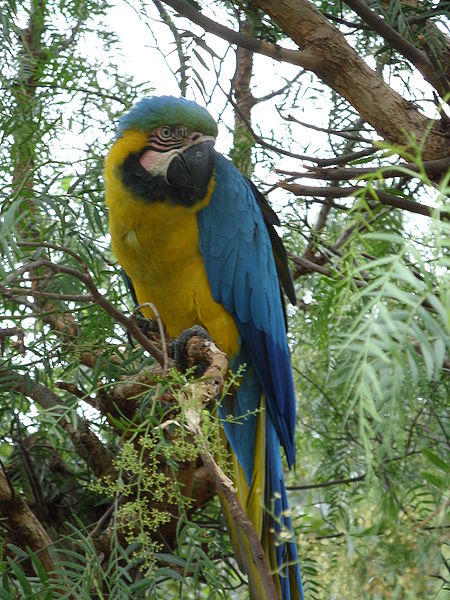
Parrot
The parrot is a medium sized group of birds, with the parrot being best known for it’s extremely brightly coloured feathers, and the ability of some parrot species to talk, as these species of parrots are able to mimic sounds made by other animals such as humans. There are thought to be over 350 species of parrot worldwide, ranging across rainforest regions of the Southern Hemisphere. The parrot tends to inhabit densely forested areas, where the parrot hunts insects and small mammals, as well as eating nuts, seeds and fruits. The parrot can grow between 8cm and 1m, depending on the parrot species. The pygmy parrot is the smallest species of parrot in the world, growing to around the same size as an adult human’s finger. The pygmy parrot is found in the jungles of Papua New Guinea. The Hyacinth Macaw is the largest species of parrot in the world, growing to more than a meter in height and native to the jungles of central and eastern South America.

Zebra
The Zebra is a large species of equine that is natively found roaming the grassy plains of sub-Saharan Africa. They are the largest and most distinctive wild horses with bodies that are patterned with white and black stripes, the exact placement of which is unique to each individual. There are three different species of Zebra that are found in Africa which are the Common Zebra (also known as the Plains Zebra and the Burchell’s Zebra), the Grevy’s Zebra (also known as the Imperial Zebra) and the Mountain Zebra. They are incredibly sociable animals that can travel vast distances in search of fresh grass and water but are severely threatened throughout much of their natural range due to increasing levels of human activity. Today, both the Grevy’s Zebra and the Mountain Zebra are considered to be endangered species and although the Common Zebra is more widespread and numerous, there have been sharp population declines in certain areas.
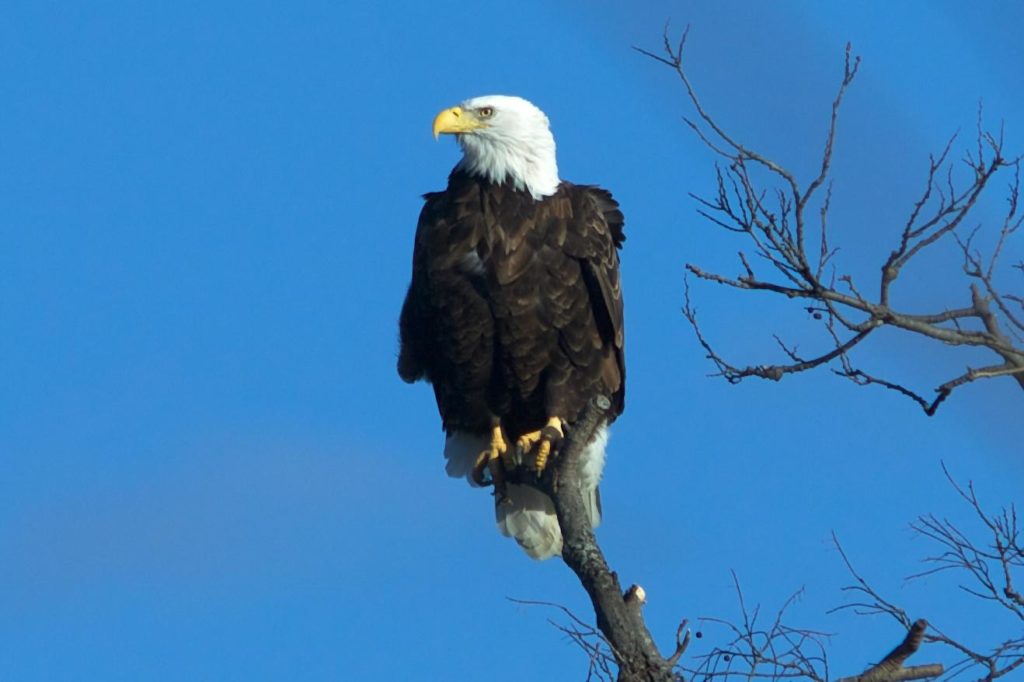
Eagle
The eagle is a (generally) large sized bird of prey meaning that the eagle is one of the most dominant predators in the sky. Eagles are most commonly found in the Northern Hemisphere including Europe, Asia and North America. Eagles are also found on the African continent. There are more than 60 different species of eagle in the world with only 2 of these eagle species being found in the USA and Canada. However, one of these eagle species is one of the most common species of eagle, the bald eagle. Despite its name, the bald eagle has a full head of feathers but their bright white colour makes the bald eagle very distinguishable. The golden eagle is the only other species of eagle found on the American continent. The size of an eagle is dependent on the species of eagle. Eagles can range in size from 40cm to over 1m in height. The wingspan of an eagle tends to be at least double the length of the eagle’s body. Eagles have feathers on the ends of their wings which the eagles move up and down to help them when flying. Eagles are dominant predators and are known as birds of prey. Eagles feed off smaller birds and bats in the sky and small mammals and fish on the ground. The eagle is well known for its incredible eyesight. An eagle’s eyesight is so good that an eagle can apparently see a mouse on the ground when the eagle is still high in the sky.

Green-anole Lizard
The small lizard is native to Georgia and South Carolina, found in the Southeastern United States from Florida to Texas along with the Caribbean islands. It is an arboreal species that is related to the iguana. Although they are often called the American chameleon due to their color-changing ability, it is not a true chameleon, which is not native to the United States. Other names are common green anole, American green anole, Carolina anole, and red-throated anole.

Horseshoe-Crab-Limulidae-in-water
The horseshoe crab (also known as the king crab), is a hard-shelled invertebrate found on the sea floor in warmer climates. Despite its name, the horseshoe crab is not actually a crab (or crustacean) and is in fact more closely related to arachnids such as spiders and scorpions. There are four different species of horseshoe crab found inhabiting the warmer shallows off the coasts of India, Japan, Indonesia, the eastern USA, and the Gulf of Mexico. The horseshoe crab has a hard outer shell, five pairs of legs and a long, thin tail which the horseshoe crab uses for changing direction whilst swimming rather than as a defensive weapon.

Indian_palm_squirrel
It’s not just cows that are considered sacred in India. In Hindu texts, a powerful deity named Lord Rama was building a bridge over the sea to help him find his kidnapped wife when a squirrel helped by moving tiny pebbles to the construction area. When Rama thanked the squirrel by petting its back, his fingers left stripes. Today, Indian palm squirrels are considered sacred to many Indians thanks to that story. However, it’s also become an invasive species that threatens new habitats far from India’s borders.

Flying_squirrel
Despite its name, a flying squirrel doesn’t fly the same way a bird or a bat flies. Instead, these squirrels glide or drift, through the air. These omnivores eat insects, mushrooms, flowers, and, of course, nuts. Flying squirrels are nocturnal and search for food at night. They can change direction by 180 degrees when gliding through the air. • These squirrels can gather and store up to 15,000 nuts in one season. • The 50 plus types of flying squirrels are in a group known to scientists as Pteromyini. • The extremely large eyes of these small rodents allow light to pour in so they can see at night. • These squirrels live in Europe, Asia, North America, Mexico, and Central America.

Dolphin
The term common dolphin tends to refer to the short-beaked common dolphin and the long-beaked common dolphin that are found in warmer seas worldwide. The common dolphin is generally found around the Mediterranean Sea but are also commonly seen in deep off-shore waters and to a lesser extent over continental shelves that are preferred to shallower waters. Some populations of dolphin may be present all year round, others appear to move in a migratory pattern. Common dolphins travel in groups of around 10-50 in number and frequently gather into schools numbering 100 to 2000 individuals.

Golden_Oriole
The Golden Oriole (also known as the Eurasian Oriole), is a small species of Bird found throughout Europe and western Asia. The Golden Oriole’s name is thought to have arisen during the 18th century after the classical Latin word meaning gold. Although almost indistinguishable in appearance, some believe that the Golden Orioles found in Europe, are actually a separate sub-species to those found in Asia. They are also known to be the only member of the Oriole family that breeds in the more temperate regions of the northern hemisphere.
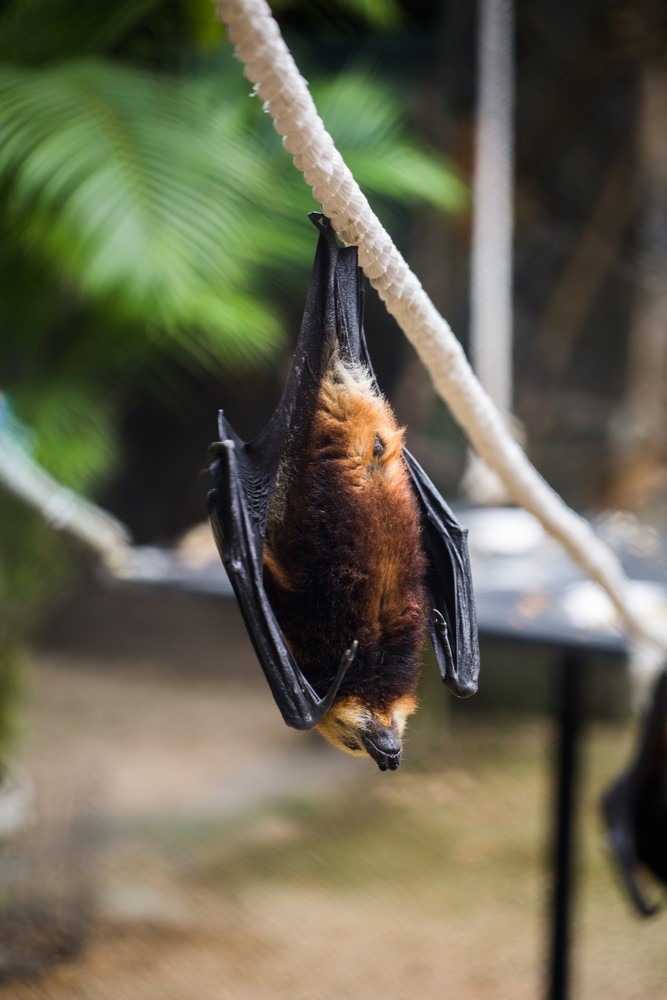
Golden-Crowned-Flying-Fox
The bat lives in the jungles of the Philippines, in colonies of up to 10,000 members. Though it has a large wingspan, this bat is small physically, with a body that measures between 7 and 11.4 inches long. The golden crowned flying fox eats only figs and other fruit and ignores things such as blood and other food from mammals in its diet. They are unable to echolocate and instead must depend on sight for their navigation.
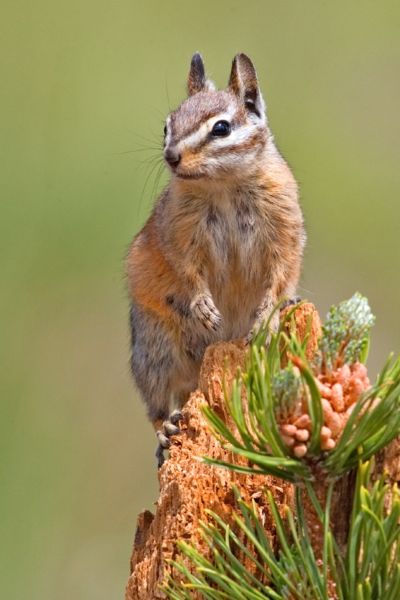
Chipmunk
Chipmunks are small squirrel-like rodents that are native to North America, although one species is found in some European countries. Chipmunks eat a wide variety of wildlife like frogs, mushrooms, birds, eggs, plants nuts and seeds. In the autumn, the chipmunks begin to gather their winter food stash, which they store in their burrows to last them until spring. The most common chipmunks are the red coloured chipmunks with light brown stripes on their back. These are North American chipmunks. Chipmunks are also becoming more popular as pets. There are 25 different species of chipmunk living in the North American forests. The chipmunk is often referred to as a small squirrel due to the obvious similarities between the two mammals.

Chinchilla
Chinchillas are native to the Andes Mountains, particularly Chile and Peru. They are smart, cute members of the rodent family with an extremely soft, plush coat of fur. Most chinchillas have gray fur, but they can also be black, white, tan or beige. Chinchillas are active, loving and make excellent pets for families that are ready to give them the attention they crave; in fact a chinchilla may become very attached to their family; however, they aren’t recommended for toddlers and young children that may unknowingly handle them roughly. Whether you are considering getting a chinchilla for a pet or you simply want to learn more about them, here is everything you’ll want to know about chinchillas.
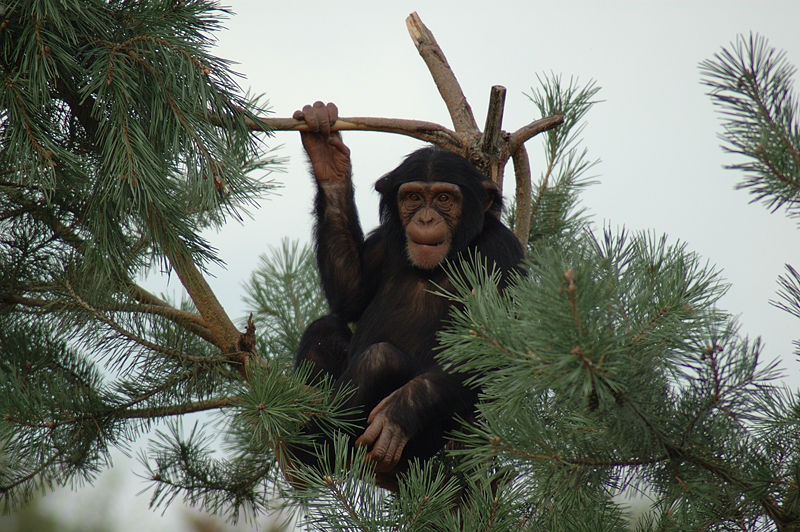
Chimpanzee
The Chimpanzee is a species of ape that is natively found in a variety of different habitats in western and central Africa. Closely related to other great apes including Orang-Utans and Gorillas, the Chimpanzee is also very closely related to Humans as we share 98% of the same DNA. They are thought to be the most intelligent animals on the planet after people and are not only known to show emotion but they are also great problem-solvers and are even known to not just use, but also make tools to help them to survive more successfully in their surroundings. There are two different species of Chimpanzee which are the Common Chimpanzee and the smaller Bonobo (also known as the Pygmy Chimpanzee) which has a limited distribution south of the Congo River. However, despite being highly adaptable and intelligent creatures, Chimpanzees are severely threatened in their natural habitats today, mainly due to hunting for bushmeat and deforestation.
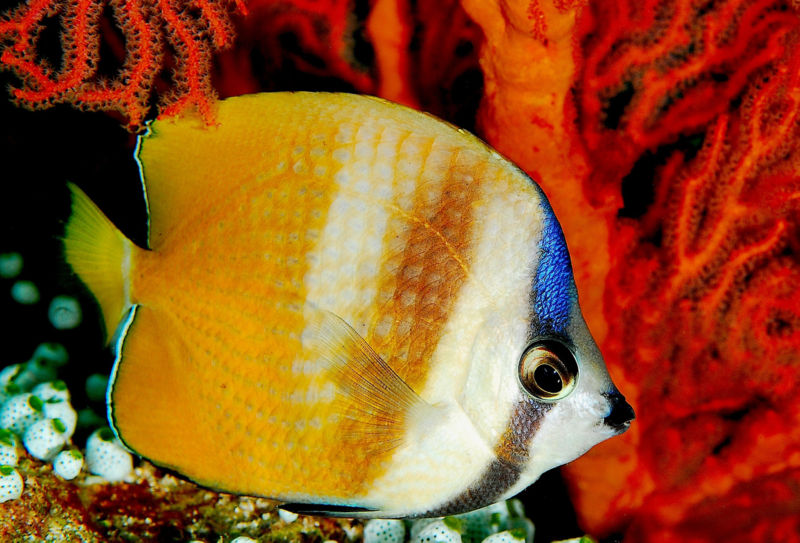
Butterfly_Fish
The butterfly fish is a generally small-sized species of marine fish, found in tropical and subtropical waters, primarily around coral reefs. The butterfly fish is well known for its brightly coloured body and elaborate markings. There are more than 100 different species of butterfly fish found distributed throughout the Atlantic, Indian and Pacific oceans, meaning that the butterfly fish is a salt-water species of (marine) fish. The average butterfly fish is fairly small and generally grows to around 4 or 5 inches in length. Some species of the butterfly fish however, are known to grow to 8 inches (20 cm) long and some butterfly fish individuals have been known to grow to 30 cm in length.
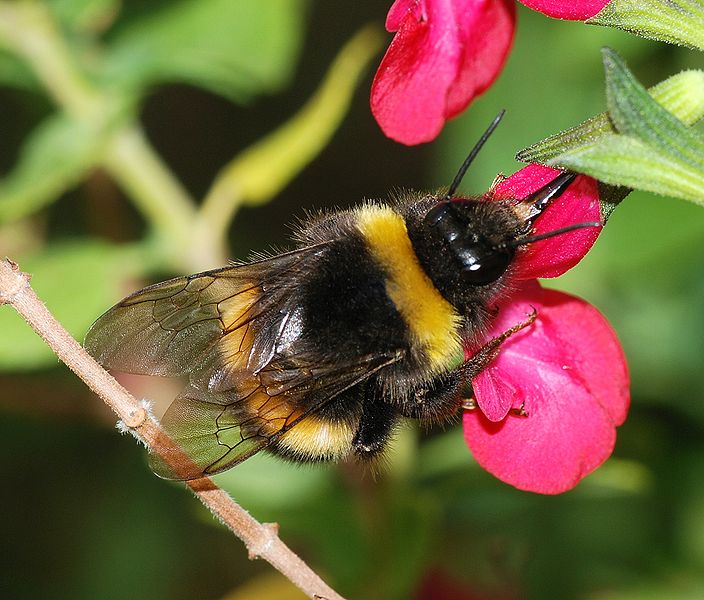
Bumble_bee
Led by a queen, bumblebees are almost a model of order and discipline. They cooperate, raise the young together, and divide up labor. Each bee has a specific role to promote the overall health and survival of the colony. Not all bees are like this, for example the carpenter bee looks like a bumble bee, but is more of a solitary bee. However, due to complex reasons, bumblebee numbers appear to be in decline throughout the world. This may have severe long-term effects on the rest of the Earth’s ecosystems.
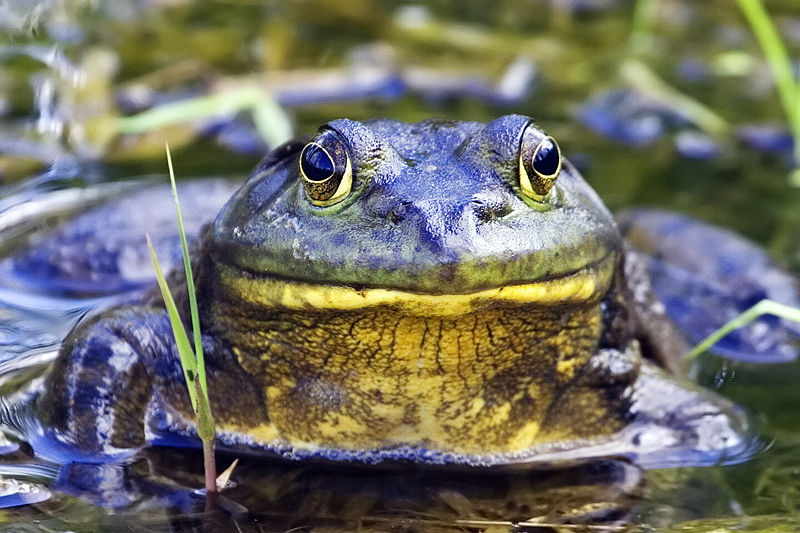
Bullfrog
The bullfrog is one of the most widely distributed frogs across the North American continent. The bullfrog is a medium-sized frog that is best known for its loud cow-like calls, hence its name. Bullfrogs are found in a wide range of permanent freshwater habitats including ponds, swamps and lakes where the bullfrog tends to prefer to be closer to the banks rather than out in the open water. Bullfrogs also prefer to be in warmer climates rather than the cooler ones. Today bullfrogs are being more and more commonly kept as pets and are even eaten by locals in some of the more southern regions of North America. Bullfrogs have also been introduced to other countries throughout the world where they have generally had a devastating impact on the local ecosystems.
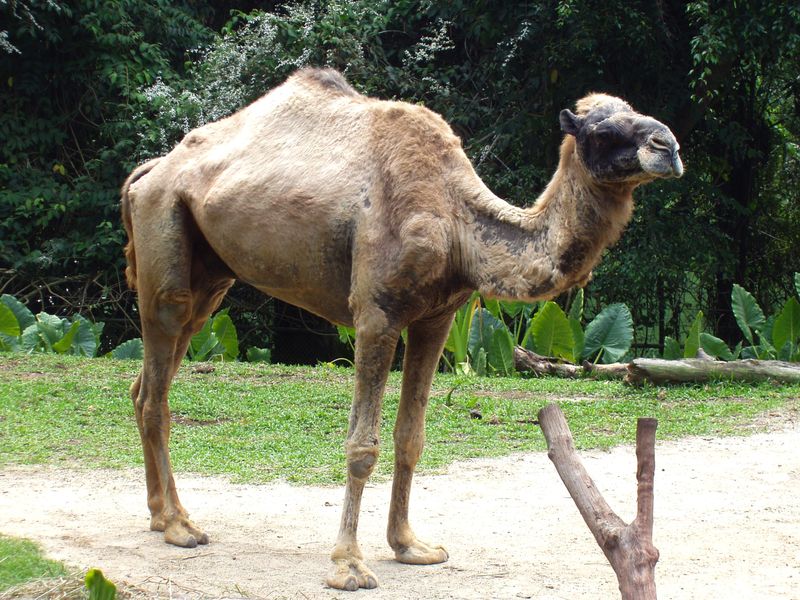
Camel
The Camel (also known as the Dromedary Camel, the Arabian Camel and the One-Humped Camel) is a large hoofed animal that is most commonly found in the hot deserts of Northern Africa and the Middle East. Thought to have been first domesticated by native people more than 5,000 years ago, these hardy animals have proved vital to the survival of humans in these areas as they are not just used for transporting both people and goods, but also provide a good source of milk, meat and wool. The Camel is one of the most unique mammals on the planet and has adapted perfectly to life in the desert where food and water can often be scarce, and the temperature changes rapidly from the scorching-hot days to the cooler nights. However, although they would have once been found freely roaming the Arabian deserts, they are today extinct from the wild but the domestic population is widespread and numerous.
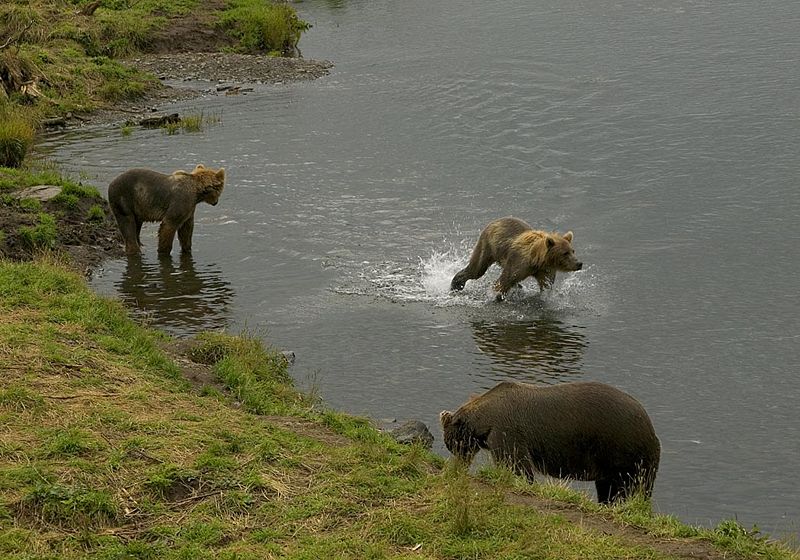
Brown_Bear
Brown Bears are found in many parts of North America and Eurasia, where the bears inhabit wooded and mountainous areas. The brown bear is also the national animal for a number of states in North America, Europe and Asia. -The brown bear is the most widely distributed bear on the globe -A group of brown bears is called a sloth or sleuth -Before hibernation, the brown bear can eat up to 90 pounds of food a day -It appears that brown bears have individual personalities and are extremely intelligent

Brown_bear
Brown bears are extremely large animals. Brown bears can grow to be five to eight feet tall and weight approximately 700 pounds. This means that the brown bear weight is about 75 percent as heavy as an Arabian horse, which weighs 930 pounds. Though some can be even larger. An Alaskan brown bear can weigh as much as 1500 pounds. In the spring after hibernation a brown bear may weigh much less. To make up for this, the bear may eat as much as 90 pounds of food per day to gain weight for the coming winter and its hibernation.

Blue_Whale
The Blue Whale is an enormous species of whale that is found in subtropical and polar waters worldwide. With some individuals growing to more than 100ft long, the Blue Whale is not only the largest animal species in the world but it is also thought that it could be the biggest creature that has ever existed. There are three recognised sub-species of the Blue Whale which are the Northern Blue Whale, the Southern Blue Whale and the Pygmy Blue Whale that despite its name, still reaches an average length of 24 meters. Although their enormous size and slow-maturing nature has meant that the world’s Blue Whale population has never been greatly numerous, they have drastically declined in numbers due to having been hunted by Humans particularly over the past 100 years. Blue Whales are now legally protected and despite one not having been deliberately caught since the 1970s, their numbers are continuing to fall in much of their natural range.

Black-Rhinoceros
The black rhino once roamed across a vast range in Africa, but heavy poaching has brought the species to the brink of extinction. Today, the black rhino is seeing its population rebound and is slowly being reintroduced to countries and environments the species vanished from in recent decades.

Tiger
Tigers are the national animal of both Bangladesh and India. One of the most wondrous and iconic animals to walk the Earth, Bengal tigers are majestic and rare. They’re also one of the biggest cat species in the world. On average, Bengals are larger than other tiger species, but the largest tiger ever recorded was a Siberian. As such, Bengals are considered the second largest tiger species. Today, wild Bengal tigers only live in Bangladesh, Bhutan, India, and Nepal. And while there are more Bengals than any other tiger subspecies on the Indian subcontinent, the populations are endangered.

Beaver
Beavers are most well known for their distinctive home-building that can be seen in rivers and streams. The beavers dam is built from twigs, sticks, leaves and mud and are surprisingly strong. Here the beavers can catch their food and swim in the water. Beavers are nocturnal animals existing in the forests of Europe and North America (the Canadian beaver is the most common beaver). Beavers use their large, flat shaped tails, to help with dam building and it also allows the beavers to swim at speeds of up to 30 knots per hour. The beaver’s significance is acknowledged in Canada by the fact that there is a Canadian Beaver on one of their coins. The beaver colonies create one or more dams in the beaver colonies’ habitat to provide still, deep water to protect the beavers against predators. The beavers also use the deep water created using beaver dams and to float food and building materials along the river.

King-Penguin
Standing as tall as the average toddler, the king penguin is large for its species. Only the emperor penguin is larger. Taxonomy places both the king and emperor penguins in the Aptenodytes genus. Both are experts in the water and can dive to great depths. King penguins hunt for lanternfish, krill, and crustaceans for themselves and to feed to their young. King penguin chicks look very different from the adults, with their brown downy feathers. The babies can take more than a year to become independent.
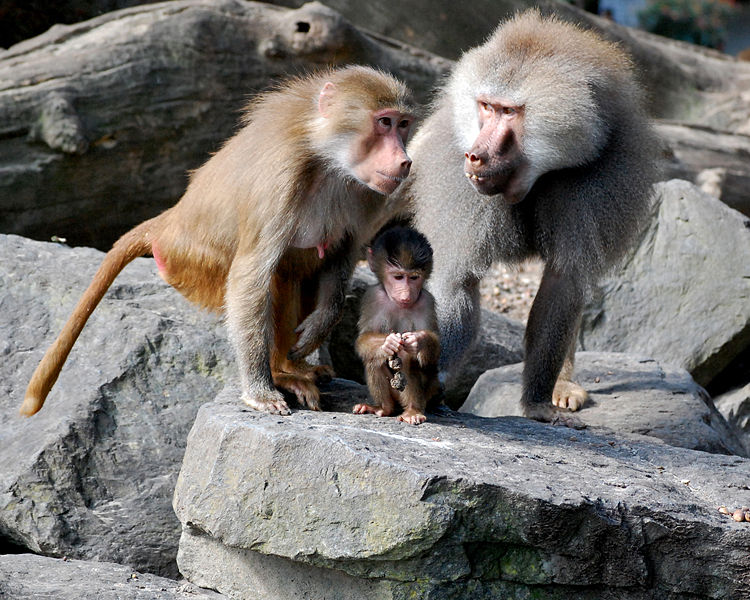
Baboon
The Baboon is a medium to large sized species of Old World Monkey that is found in a variety of different habitats throughout Africa and in parts of Arabia. There are five different species of Baboon which are the Olive Baboon, the Guinea Baboon, the Chacma Baboon, the Yellow Baboon and the Hamadryas Baboon which differs most from the others wide its bright red face and cliff-dwelling lifestyle (the other four species are collectively known as Savanna Baboons). However, there is some debate over the classification of the different species due to the fact that some have been known to interbreed, indicating that they could be sub-species instead. Baboons are incredibly sociable and intelligent animals that are known to form close bonds with other members of the troop that often last for life. They are also incredibly adaptable animals but their population numbers are declining throughout their natural range primarily due to hunting and habitat loss.

Avocet
The avocet is a type of wading bird that is found across mudflats in the world’s warmer climates. There are four different species of avocet which are the Pied avocet, the American avocet, the Red-necked avocet and the Andean avocet. The avocet is generally found in watery habitats close to the coast including marshland, wetlands and swamp. The exact habitat of the avocet is dependent on the species as the Pied avocet is found in Europe and Asia, the American avocet is found on the Pacific coast of North America, the Red-necked avocet in Australia and the Andean avocet is natively found nesting high up in the Andes Mountains.
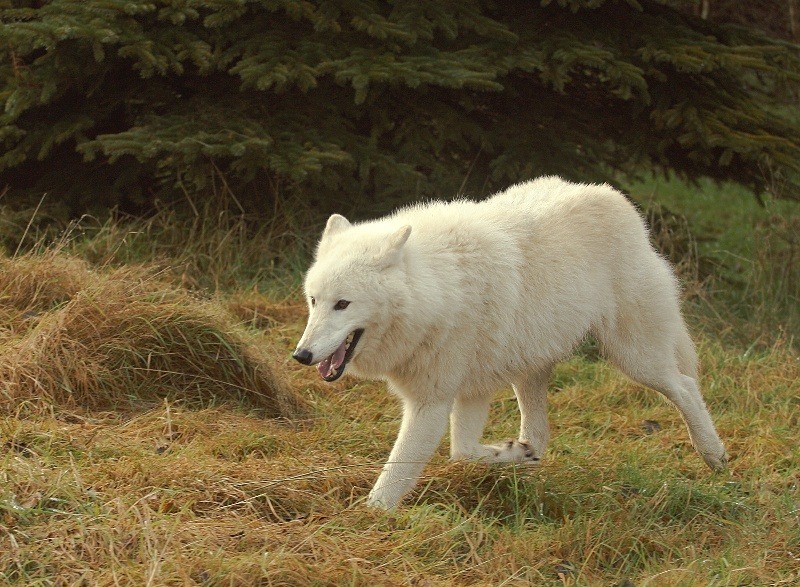
Arctic_Wolf
Arctic wolves live in Greenland, Alaska, Iceland and Canada. But, these wolves live in caves and not dens like other types of wolves. Their short noses and small ears help to maintain their body heat on the tundra. The territory traveled by an Arctic wolf can add up to hundreds of miles. • These wolves travel in groups or packs of about six • They live about 7 years in the wild • They have a thick, white coat that’s insulated against very cold temperatures • Wolf pups are born with blue irises that change to a yellow/gold as they grow older
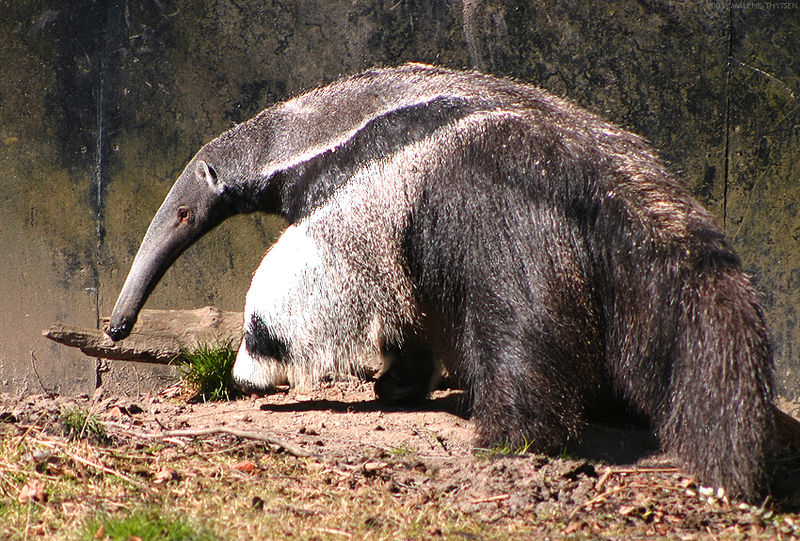
Anteater
Anteater refers to several medium-sized insect-eating mammals found in the Southern Hemisphere. They are edentate animals, meaning they have no teeth. However, they use their long tongues to eat the insects that comprise the bulk of their diet. Giant anteaters, the most well-known of the four species, can consume as much as 35,000 ants or termites in a single day. Most zoologists will tell you, “Don’t mess with an anteater because it really, really doesn’t want to be friends”

Angelfish
There are around 100 different species of angelfish that inhabit the waters of the southern hemisphere. There are two main types of angelfish, those that live in the freshwater rivers in South America (freshwater angelfish) and those angelfish that inhabit the salty ocean waters (marine angelfish). The freshwater angelfish has a more triangular shape and will generally only grow to a few inches in length. The marine angelfish can grow up to 12 inches (the same length as a big ruler) and generally have very brightly coloured markings but the exact colours depend on the angelfish species. Both the freshwater angelfish and the marine angelfish are known to be relatively difficult fish to keep in household aquariums, as both types of angelfish require very specific water conditions. Angelfish are very susceptible to changes in the water such as salt levels and pH levels, and will often die if changes are too drastic.
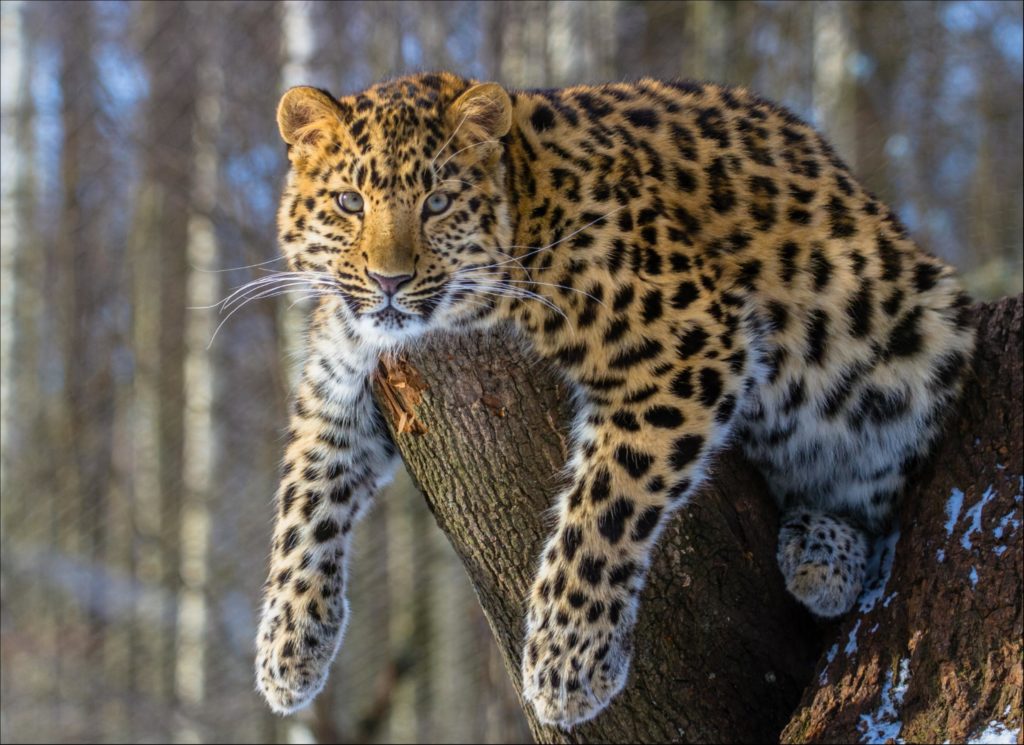
Amur_leopard
The Amur leopard is an isolated subspecies of leopards surviving along the border of Russia and China. While the Amur leopard may be the most rare big cat on Earth, its numbers have been rebounding thanks to incredible conservation efforts. Incredible Amur Leopard Facts! The Amur leopard lives in extreme environmentsin Russia’s far east and has unique adaptations like a coat that grows significantly during the winter season to protect it against harsh condition that can reach below -30 degrees Celsius! In 2000, a survey found just 30 Amur leopards in a small area along the border of Russia and China, making the Amur leopard the rarest big cat on Earth. Thanks to conservation efforts, today the Amur leopard’s population is estimated to have increased to more than 100 individuals in the wild, and more than 300 in zoos across the world.

Alligator
Alligators are in the same family as other large reptiles like Crocodiles but are native to only two countries, which are the southern USA and China (where the Alligator is now nearly extinct). Alligators tend to be smaller than their Crocodile cousins but have been known to move at speeds of up to 15mph on land making them one of the fastest large reptiles in the world. Despite their size, there are a number of distinct differences between Alligators and Crocodiles as an Alligator’s snout is shorter than that of a Crocodile, and with their mouths shut, an Alligator’s teeth cannot be seen but a Crocodile’s can. Alligators are also commonly known as Gators in their native, southern North American habitats.

Aldabra_Giant_Tortoise
The Aldabra Giant Tortoise is a giant species of Tortoise native to the Aldabra Islands in the Indian ocean. The Aldabra giant tortoise is one of the largest species of Tortoise on the planet and is also one of the world’s longest living animals, with one Aldabra Giant Tortoise individual reaching the grand old age of 255 years old. The Aldabra Giant Tortoise is the only Indian ocean giant Tortoise species alive today as others have now become extinct with the arrival of Human settlers (including the Seychelles Giant Tortoise which is now thought to be extinct in the wild). The Aldabra Giant Tortoise and the Seychelles Giant Tortoise are so similar in both appearance and behaviour that they are actually thought by some to be the same species.

African_Penguin
The African Penguin is a small to medium sized Penguin species that is found along the coast of South Africa and on a number of its surrounding islands. The African Penguin is thought to be most closely related to the Humboldt and Magellanic Penguins found in southern South America, and the Galapagos Penguin found in the Pacific Ocean near the Equator. The African Penguin was named for the fact that it is the only species of Penguin that is found breeding on the African Coast, and it is believed to be one of the first Penguin species to be discovered by humans.

Adelie_penguin
The Adelie Penguin is the smallest and most widely distributed species of Penguin in the Southern Ocean and is one of only two species of Penguin found on the Antarctic mainland (the other being the much larger Emperor Penguin). The Adelie Penguin was named in 1840 by French explorer Jules Dumont d’Urville who named the Penguin for his wife, Adelie. Adelie Penguins have adapted well to life in the Antarctic as these migratory Birds winter in the northern pack-ice before returning south to the Antarctic coast for the warmer summer months. The Adelie Penguin is one of the most easily identifiable Penguin species with a blue-black back and completely white chest and belly. The head and beak of the Adelie Penguin are both black, with a distinctive white ring around each eye. The strong, pink feet of the Adelie Penguin are tough and bumpy with nails that not only aid the Adelie Penguin in climbing the rocky cliffs to reach its nesting grounds, but also help to push them along when they are sliding (rowing) along the ice. Adelie Penguins also use their webbed feet along with their small flippers to propel them along when swimming in the cold waters. .

African_elephant
The African Bush Elephant is the largest of all living creatures on land today, with some individuals growing to weigh more than 6 tonnes. The Elephant is thought to have been named after the Greek word for ivory, meaning that Elephants were named for their uniquely long tusks. Although many of the ancestors of the African Bush Elephant became extinct during the last ice-age (including the Woolly Mammoth), there are three distinct species of Elephant remaining today which are the Asian Elephant (of which there are a number of sub-species), the African Bush Elephant and the African Forest Elephant. Although these two Elephant species are very similar, the African Bush Elephant is considered to be generally larger than the African Forest Elephant, which has rounder ears and straighter tusks.
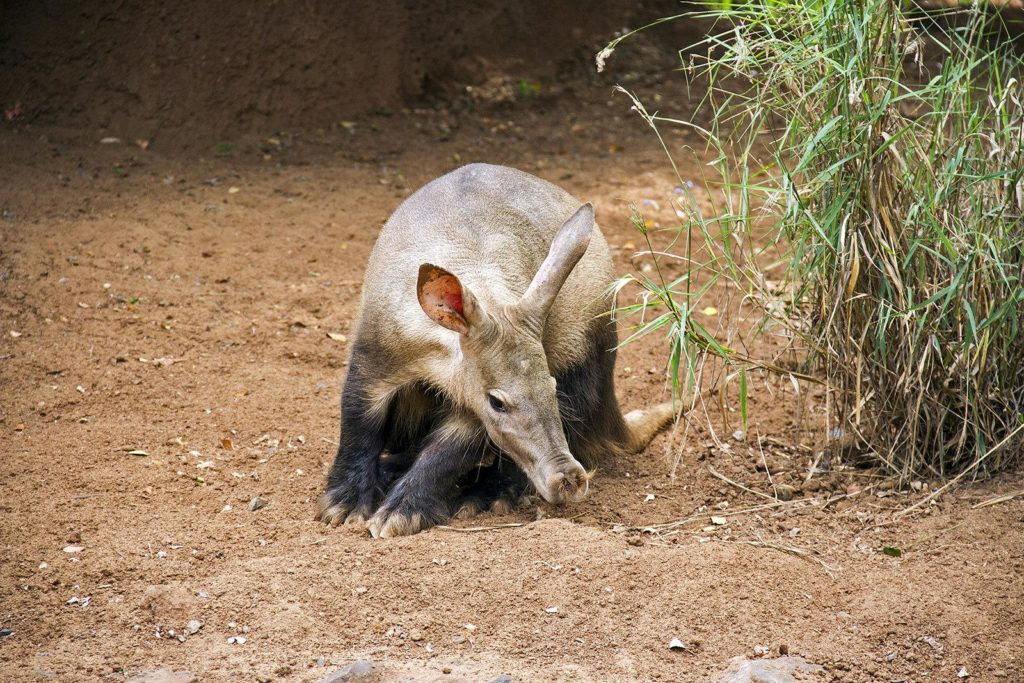
Aardvark
Aardvarks are small pig-like mammals that are found inhabiting a wide range of different habitats throughout Africa, south of the Sahara. They are mostly solitary and spend their days sleeping in underground burrows to protect them from the heat of the African sun, emerging in the cooler evening to search for food. Their name originates from the Afrikaans language in South Africa and means Earth Pig, due to their long snout and pig-like body. Aardvarks are unique among animals as they are the only surviving species in their animal family. Until recently it was widely believed that they were most closely related to other insectivores such as armadillos and pangolins but this is not the case with their closest living relatives actually thought to be elephants.